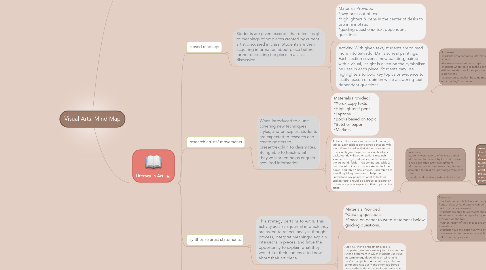
1. Literacy in Art
1.1. closed readings
1.1.1. Students are given excerpts that offers insight to meanings of art pieces created by current artist discussed in class. Students are then acquiring information about piece before further dissecting the piece in a class discussion
1.1.1.1. Materials Provided: *own print out of text *highlighters & pens in the center of desks to use in annotation *guiding questions/ text dependent questions
1.1.1.2. Activity: With given text, students are to read more into Salvador Dali's surreal paintings. Each section covers a new painting, paired with a visual, insight is given on the symbolism he uses in each piece. Students may use highlighters to bold key topics or evidence to justify reason of opinion while answering text dependent questions.
1.1.1.2.1. Successes: -students obtained more information on artwork -discussions were more in depth -students where able to make connections with information and their personal experiences -a grasp on surrealism became more evident after reading/discussion
1.2. research artists/ movements
1.2.1. When introduced to a unit covering new techniques, styles, and principles, students are expected to research and create posters to present/explain to classmates. Being able to teach what they've learned helps engrain acquired information
1.2.1.1. Materials Provided: *Xerox copy texts *Highlighters/ pens *Laptops *Books based on topic *Butcher paper *Markers
1.2.1.2. Activity: The classroom consists of four large tables. Each table is considered a station with four different medias that students are to use to research given topic (i.e. research artist's background, while other stations research same artist's style, art pieces, and influence on the art world. Table 1 has computers, table 2 has printed out texts to annotate, table 3 has books, and table 4 has articles. Each table has specific guiding questions to help them understand key points on what to look for. Ending result should be a group collaboration to create a poster explaining their topic on the artist.
1.2.1.2.1. Successes: -students were able to effectively gather information to present by the end of class -since each table provided different information about the same artist, students were able to build on knowledge from each other -colorful and creative posters about artist
1.3. synthesize artist statements
1.3.1. This strategy pertains to Art II. This activity acts as a journal in which they are asked to reflect, analyze thought process, interpret meanings/ explain intensions in pieces, and have the opportunity to explain what they would like their audience to know about their art piece.
1.3.1.1. Materials Provided: *Guiding questions *Space on paper to write statement below guiding questions.
1.3.1.1.1. Successes: -Students can easily talk about their piece in front of class since thoughts can be referred back to artist's statement. -Students are able to synthesize their statements by referring guiding questions provided on the top. -Further insight of their pieces are available to readers -Students have the opportunity to provide more meaning to piece and are able to self reflect on their process.
1.3.1.2. Activity: After a project/ art piece is completed, students are required to write their Artist's Statement in which students use visual art terminology depending on which unit they've completed. A recent project that we completed was our Monochromatic Surreal Pieces, where students paint a surreal scene using one color varying in tints, tones, and shades to create contrast. Students should also write out a reflection of how they created their piece step-by-step.
1.4. Vocabulary
1.4.1. A chart is provided with four sections to explain their vocabulary word.
1.4.1.1. Activity: In box 1, students write definition of vocabulary word, box 2 is consecutive meanings ("This reminds me of.."), box 3 is a list of characteristics of the definition, and box 4 is a drawing using the definition (if term is a technique of coloring, they will use technique in whatever kind of drawing they create).
1.4.1.1.1. Successes: -students are able to grasp terminology visually and apply it in multiple ways. -students get a better understanding of abstract concepts. -visual learners respond well to activity.
1.4.1.1.2. Materials Provided: *Graphic Organizer *Open Notes of vocabulary

